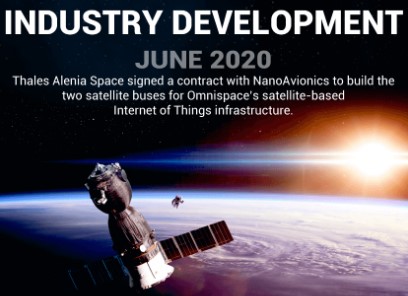In 2020, the global satellite bus market was valued at $27.67 billion. It’s expected to grow from $30.08 billion in 2021 to $54.33 billion by 2028, with an annual growth rate of 8.81%. North America led the market, holding a 40.39% share in 2020. A satellite bus is the core structure of a satellite that provides power, propulsion, guidance and control, thermal regulation, and other critical functions to support the satellite’s payload and operations. The satellite bus is the unsung hero that enables a satellite to reliably function in the harsh environment of space.
Informational Source:
https://www.fortunebusinessinsights.com/satellite-bus-market-102608
Satellite buses come in a variety of sizes, designs, and capabilities to match the diverse range of satellite payloads, missions, and orbits. From the smallest CubeSats to the largest geostationary communications satellites, the satellite bus plays a vital role.
Over the past decade, satellite bus technology has advanced significantly, driven by the growth of the commercial space industry, the proliferation of small satellites, and the need for ever-more-capable space systems. This report provides an overview of the latest and most unique developments in satellite bus technology as of mid-2023.
Key Trends in Satellite Bus Design
Modular and Scalable Architectures
One of the biggest trends in satellite bus design is the shift towards more modular and scalable architectures. Gone are the days of custom-built, one-off satellite buses. Today’s leading satellite bus providers are focused on developing standardized, building-block style platforms that can be easily scaled up or down to accommodate different payload sizes and mission requirements.
The modular approach allows satellite manufacturers to rapidly configure and assemble a satellite bus to their specific needs, rather than having to develop a custom design from scratch. This dramatically reduces development timelines and costs. It also enables satellite operators to more easily upgrade or refresh their satellite fleets over time by swapping out older bus components.
Some of the most prominent examples of modular satellite bus architectures include:
- Airbus (Netherlands)
- Boeing (U.S.)
- Centum (India)
- Honeywell International Inc. (U.S.)
- IAI (Israel)
- L3Harris Technologies, Inc. (U.S.)
- Lockheed Martin Corporation (U.S.)
- Maxar Technologies (U.S)
- Mitsubishi Electric Corporation (Japan)
- Northrop Grumman (U.S.)
- OHB SE (Germany)
- Thales Group (France)
Increased Electrical Power and Energy Density
Another key trend in satellite bus design is the push for ever-greater electrical power and energy density. The growing complexity and power demands of satellite payloads, particularly in areas like earth observation, communications, and space-based solar power, is driving the need for more capable and efficient satellite bus power systems.
In the past few years, satellite bus providers have made major strides in power system technology, including:
-
High-Efficiency Solar Arrays: New lightweight, high-power density solar array designs that can generate over 30 kW of electrical power for the largest geostationary communications satellites.
-
Advanced Battery Systems: Lithium-ion and lithium-polymer battery packs offering greater energy density, charge/discharge cycles, and safety compared to legacy nickel-cadmium batteries.
-
Improved Power Electronics: Power conversion, distribution, and regulation systems with higher efficiency, reduced mass and volume, and increased reliability.
-
Integrated Power and Propulsion: Combining the satellite bus power system with the electric propulsion subsystem to improve overall system mass, volume, and efficiency.
These advancements in power system technology have enabled satellite buses to support payloads with far greater power requirements, opening up new mission capabilities. They have also improved satellite bus reliability and lifetime by providing ample power reserves.
Smarter Guidance, Navigation, and Control
Satellite buses are also becoming more “intelligent” through advancements in onboard guidance, navigation, and control (GN&C) systems. These systems are responsible for accurately maintaining the satellite’s position, orientation, and trajectory – critical functions for mission success.
Some of the latest GN&C innovations include:
-
Advanced Sensors: High-precision star trackers, sun sensors, inertial measurement units, and other sensors that can determine the satellite’s attitude with extreme accuracy.
-
Autonomous Navigation: Onboard algorithms that can precisely calculate the satellite’s orbital position and trajectory without relying on ground-based tracking.
-
Adaptive Control: Closed-loop control systems that can automatically adjust the satellite’s thrusters, reaction wheels, and other actuators to maintain stability and pointing, even in the face of disturbances.
-
Predictive Avoidance: Software that can predict and avoid potential collisions with space debris or other satellites, enhancing the safety and longevity of the satellite.
These smarter GN&C capabilities reduce the burden on ground control teams, improve mission reliability, and enable more complex maneuvers and operations. They are particularly valuable for satellite constellations, where autonomous onboard systems are essential for coordinating the movements of dozens or hundreds of satellites.
Increased Thermal Management Capabilities
Thermal management is a critical function of the satellite bus, as it must maintain the proper temperature range for all onboard systems and payloads. Satellite buses are facing growing thermal challenges as payloads become more power-hungry and the space environment becomes more dynamic (e.g. due to increased space debris).
Recent advancements in satellite bus thermal control include:
-
Advanced Heat Rejection Systems: High-efficiency radiators, heat pipes, and fluid loops that can dissipate over 20 kW of waste heat for the largest communications satellites.
-
Deployable Thermal Structures: Retractable sunshields, extendable radiator panels, and other deployable thermal management components that optimize heat rejection.
-
Intelligent Thermal Control: Closed-loop thermal regulation systems that can dynamically adjust coolant flows, heater outputs, and other parameters to maintain optimal temperatures.
-
Integrated Thermal Design: Satellite bus architectures that tightly integrate the thermal subsystem with power, propulsion, and other systems for maximum efficiency.
These thermal innovations ensure that satellite buses can continue to support increasingly power-intensive payloads without overheating, while also improving overall system reliability and lifetime.
Advancements in Satellite Bus Subsystems
Beyond the overall architectural trends, satellite bus technology has also seen significant advancements at the subsystem level. Here are some of the latest developments:
Power Subsystems
- High-Efficiency Solar Arrays: New solar cell technologies like triple-junction gallium arsenide and deployable/retractable array designs are delivering over 300 W/kg of power density.
- Advanced Energy Storage: Lithium-ion and lithium-polymer batteries offering 250 Wh/kg or more of specific energy, 5,000+ charge cycles, and improved safety.
- Integrated Power and Propulsion: Combining the power and propulsion subsystems into a single integrated system for mass/volume savings and improved efficiency.
- Fault-Tolerant Power Distribution: Redundant power buses, switchgear, and other components to maintain power in the event of failures.
Propulsion Subsystems
- All-Electric Propulsion: Xenon-based Hall effect thrusters and ion engines that provide high specific impulse and efficiency for station-keeping and maneuvering.
- Green Chemical Propulsion: Environmentally-friendly propellants like hydrogen peroxide and AF-M315E replacing legacy hydrazine systems.
- Micropropulsion: Miniaturized cold gas, electrospray, and other thrusters for precision attitude control of small satellites.
- Advanced Materials: Lightweight, high-strength composite structures for propellant tanks and other propulsion components.
Attitude Control Subsystems
- Reaction Wheel Clusters: Groups of 4-6 reaction wheels providing redundant 3-axis control authority and momentum management.
- Miniaturized Star Trackers: High-accuracy star tracker sensors the size of a matchbox for small satellite attitude determination.
- Integrated Avionics and GN&C: Combining the flight computer, sensors, and control algorithms into a single integrated avionics package.
- Autonomous Navigation and Control: Onboard algorithms that can autonomously determine the satellite’s position and orientation, and automatically adjust actuators to maintain stability.





















